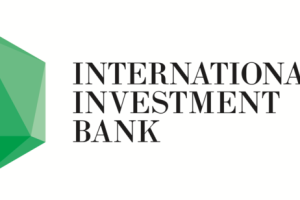Alătură-te comunității noastre!
Vezi cele mai recente știri & informații din piața de capital

Fitch Ratings has affirmed Romania’s Long-Term Foreign-Currency Issuer Default Rating (IDR) at ‘BBB-‘ with a Negative Outlook.
KEY RATING DRIVERS
Credit Strength and Weaknesses: Romania’s ‘BBB-‘ rating is underpinned by EU membership and EU capital flows that support external and macro-stability, and GDP per capita, governance and human development indicators that are above ‘BBB’ category peers. These are balanced against larger twin budget and current account deficits than peers, a weak record of fiscal consolidation and high budget rigidities, and a fairly high net external debtor position.
Negative Outlook: The Negative Outlook reflects the downside risks posed by the Ukraine war and European energy crisis on Romania’s economic, fiscal and external performance, aggravated by a much weaker eurozone growth outlook and more challenging external financing conditions than at the time of our last review in April. These risks are aggravated by competing policy objectives that underlie persistent macroeconomic imbalances. It also reflects continued uncertainty regarding the implementation of policies to address structural fiscal imbalances over the medium term despite progress this year.
Fiscal Risks to Increase: Fitch forecasts a narrowing of the fiscal deficit in 2022 to 6.4% of GDP, broadly in line with budget targets, driven to a large extent by solid revenue performance (which is likely to exceed 20% yoy). Expenditure growth has been more muted due to moderate pension and wage increases but has started to accelerate, given price-spill overs on goods and services and additional support measures.
We expect a more challenging fiscal picture in 2023 in light of slower growth and higher expenditure demands. This will entail difficult policy trade-offs and could reduce fiscal transparency if the authorities rely on one-offs, reducing capex or implementing ad-hoc windfall taxes. So far the energy support schemes, which include caps on electricity and gas to households and to a lesser extent firms, are planned to be financed by windfall taxes with a limited impact on the budget, but more direct support cannot be excluded.
Medium-term Fiscal Outlook Reliant on Reforms: We expect the headline deficit to fall to 5.5% in 2023 and 4.7% in 2024, mostly driven by a gradual improvement in revenue collection in line with a tax reform approved in 2Q22 that aims to reduce loopholes and raise some taxes. Reforms on the pension and wage schemes (due in the next year according to commitments on the Recovery and Resilience Plan) are essential to assure medium-term fiscal sustainability, as well as continued EU fund support.
There is continued commitment by the authorities to implement these reforms but they will prove politically costly, with Romania having a weak track record of approving structural fiscal reforms. Overall, we see continued risks of fiscal slippage, including the potential for additional spending ahead of 2024 super-electoral cycle.
Financing Challenges: Very high nominal growth will largely offset the rise in interest costs and still large primary fiscal deficits, with the ratio of public debt/GDP remaining at an average 49.5% in 2022-2024 (compared with the current ‘BBB’ median of 55.5%). Romania’s challenges are around financing given global risk aversion and the large financing needs. Although the latter are set to moderate somewhat in 2023-24 (from close to 11% of GDP in 2022), this will still require extensive external issuances (of around EUR8 billion-EUR10 billion) and relying on a heavily tapped domestic market. Loans from the Recovery and Resilience Facility (RRF) and other multilateral support will help reduce some pressures but this will be towards the end of our forecast period.
External Imbalances Persist: A stronger-than-expected widening of the trade and income balances mean we now forecast the current account deficit to reach 9.9% in 2022 (the largest in the ‘BBB’ category and in the EU). This highlights the deterioration in terms of trade and ongoing structural challenges both on fiscal and sectoral side. As long as Romania continues to receive EU funds and moderate levels of FDI, we expect the need of debt-financing flows at around 1/3rd of the current account deficit (CAD). Over the medium term, the CAD should narrow gradually, thanks to fiscal consolidation and a recovery of exports, but external imbalances will remain a constraint. We expect the net external debt position to average around 23% of GDP over the forecast period, compared with the ‘BBB’ median of 1.5%.
Strong Performance but Prospects Deteriorates: Fitch now expects the economy to expand by 6.2% in 2022, one of the strongest rates in the EU, thanks to a very solid performance in the first two quarters of the year. Growth has been driven by inventory build-up (which might reverse in coming quarters) but also strong private consumption, despite the war in Ukraine. Nevertheless, we expect high inflation, rising interest rates and a weaker external environment to lead to a rapid slowdown in GDP growth in the coming quarters, with the economy likely to enter a technical recession in 1Q23. The weak statistical carry-over and substantial energy cost pressures means we forecast growth of only 1.6% in 2023, recovering to 3.7% in 2024 as public investment tied to EU funds is ramped up.
Energy Risks: The short-term macroeconomic outlook is subject to significant downside risks, in particular around the impact of higher energy costs in Europe. Romania is one of the least exposed countries in CEE to Russia energy trade, having one of the largest domestic gas production capacities in Europe. The latter, combined with storage capacity almost filled, means that the risk of gas supply disruptions over the coming winter is low. However, the price and availability of electricity remains a significant challenge, potentially having a major disruptive effect on certain industries and spill-over to households, despite the government’s support schemes. Moreover, risks of a stronger slowdown in the eurozone would translate to much weaker Romanian exports.
High Inflation and Pressure on Policy Framework: We have revised our annual harmonised inflation forecasts to 12.2% in 2022 (from 10% previously), and now expect inflation to fall more gradually to only 11% in 2023 and 5.7% to 2024. The impact of high energy and food prices has translated to higher inflation across all categories, but there are some signs of month-on month moderation thanks in part to price-cap measures. However, core inflation has continued to accelerate, highlighting the risks around structural challenges in some sectors (food processing) and underlying price pressures from a relatively tight labour market. There is a high degree of uncertainty around the inflation trajectory, in particular given the extent of pass through of energy costs over the coming years.









Vezi cele mai recente știri & informații din piața de capital